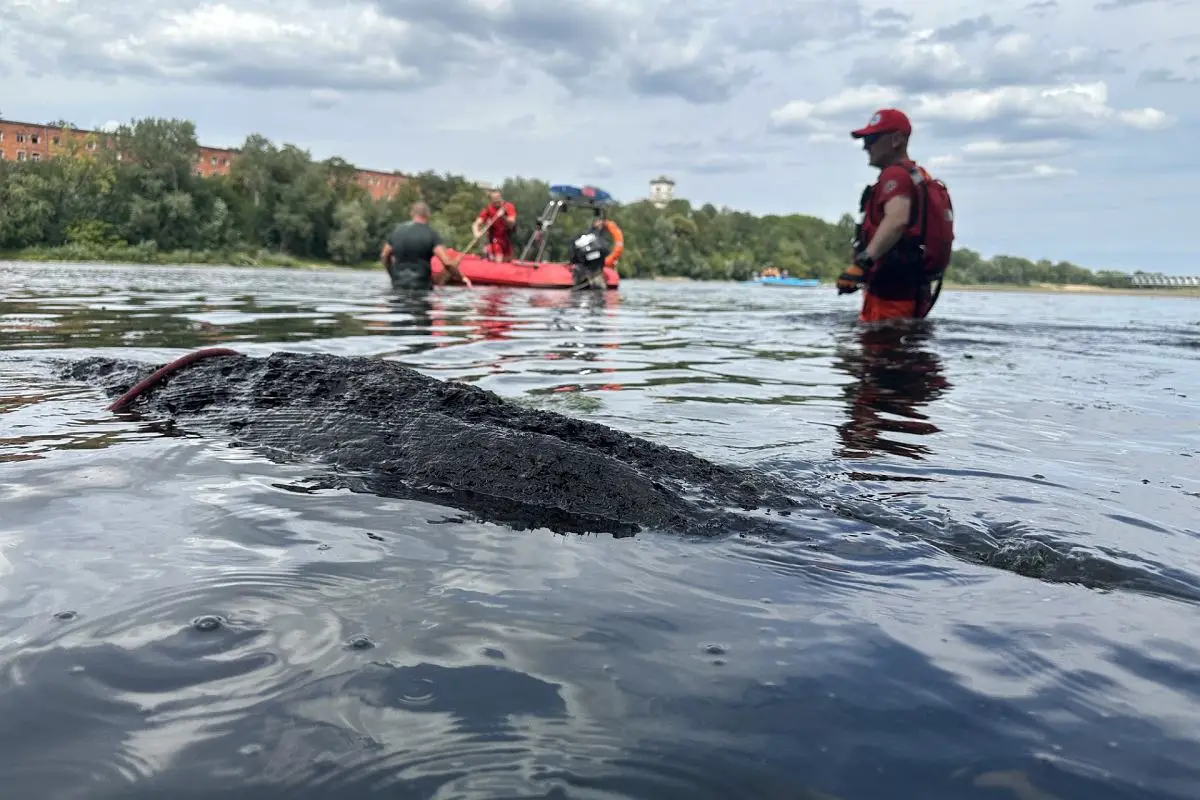Archaeologists have discovered a dugout canoe at the mouth of the Narew River near the Modlin Fortress in Poland.
Dugout canoes, also known as a logboat or monoxylon, are the oldest form of boats made from a hollowed-out tree. The earliest examples date from the Neolithic period around 8,000-years-ago.
The discovery was made by members of the Triglav association, who noticed a section of the boat’s stern above the waterline. “At first, only a piece of the stern was visible and it was difficult to assess whether it was really a relic or just a simple log of wood”, said Sławomir Kaliński, president of the Triglav Association.
Upon alerting authorities, a team from the Water Volunteer Search and Rescue Service, and archaeologists from Pogotowie Archeologiczne, conducted an inspection of the dugout still in situ.
According to the team, the dugout measures 7.8 metres long by 80 cm’s wide, and sits at an average depth of 80 cm’s beneath the surface. It is carved from a hardwood, possibly oak, but appears to have sustained some damage as the bow is missing.
“The shipbuilder had quite a lot of skills. At the end of the side, you can see a rectangular hollow made by a human hand, perhaps for a steering element,” said Robert Wyrostkiewicz from Pogotowie Archeologiczne.
Wyrostkiewicz emphasised that dating the discovery is premature, as dugout canoes have been used from ancient times up until the 19th century.
“They were also used during the Roman period, and several hundred years later by the Slavic fleet. Perhaps the specimen comes from an older period, but it could just as well be a 19th-century work. Due to the degree of damage, I would estimate its age at 200-300 years, so it could date back to royal times,” added Wyrostkiewicz.
Raising the dugout presents complications, as it requires oxygen-free conditions for transportation. For now, it has been secured in the Narew River to ensure its preservation.
Header Image Credit : PAP
Sources : PAP





